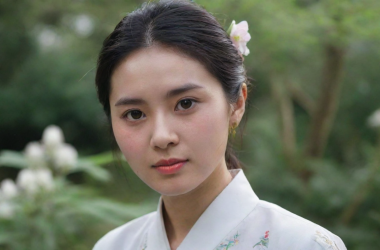Once again, it’s the season of bountiful ugly tangerine harvests. When people talk about citrus fruits, many can easily list varieties such as sugar tangerines, blood oranges, ugly tangerines, Sumo oranges, and rough-skinned mandarins among the diverse categories. Indeed, the diversity of the citrus family makes other fruits pale in comparison. Have you ever been confused about the differences between tangerines, oranges, and mandarins when selecting fruit at the supermarket? They have similar appearances and tastes, but what differences lie beneath? This article will unveil some little-known facts about the citrus family.
Firstly, pomelos, tangerines, oranges, mandarins, and limes are all members of the citrus genus within the Rutaceae family. The origin of citrus can be traced back to the first three fruits: pomelo, tangerine, and citron. Each of them has propagated descendants, maintaining unique characteristics. For example, the citron, also known as “perfume lemon,” tastes both sour and bitter and is often consumed with honey.
Many of the citrus varieties we are familiar with are actually hybrids of these original members. Take the orange for instance; it is a hybrid of the pomelo and tangerine, resembling the tangerine in appearance while inheriting the pomelo’s difficult-to-peel trait. Lemons are a mix of oranges and citrons, inheriting their parents’ challenging peel and sour-bitter taste. As for the mandarin, it is a hybrid of the orange and tangerine. It looks very similar to a tangerine but has a thicker skin. The grapefruit, on the other hand, is an offspring of the orange and pomelo, shaping like a pomelo but also having the sweet aroma of an orange.
You might wonder, why does the citrus family have such a multitude of variants? Unlike the usually strict reproductive isolation mechanisms in the animal kingdom, the barriers between plants, especially within the same family like Rutaceae, are far from being severe. Crossbreeding among citrus family members is quite easy, combined with the possibility of asexual variation, making the citrus family particularly complex and rich.
On the other hand, continuous selection and cultivation by humans have also contributed to the diversity within the citrus family. The history of citrus cultivation in China is long-standing, with its beginning traced back to the Neolithic era around 4,000 to 5,000 years ago. There are numerous articles and legends related to citrus in the literature, for example, “A tangerine becomes a trifoliate orange in the north of the Huai River,” and idioms like “All that glitters is not gold”, which also reflect the ancient Chinese’s attention and sentiment towards citrus. Cultivating new citrus varieties has not only added flavor to people’s daily lives but also bears significant agricultural value.
For several decades now, a contagious plant disease called Huanglongbing (HLB), or citrus greening disease, has been wreaking havoc around the globe. This disease is caused by a tiny microorganism known as a liberibacter. The liberibacter is tough to eradicate, and no cure has been found yet. Such microscopic organisms pose a huge threat to the global citrus industry. Infected citrus trees have yellow leaves, with severe effects.
To fundamentally control citrus greening disease, we must spare no effort in cultivating disease-resistant fruit tree varieties. However, developing new fruit varieties is not as easy as cultivating grain crops. Grains, being annual plants, can be harvested in the same year they are sown, which is highly suited for hybrid cultivation. In contrast, most fruit plants need several years of growth before bearing fruit, making the breeding cycle of hybrid varieties quite lengthy. Additionally, breeding hybrids in the fruit sector requires a focus on taste, a complex and crucial consideration. If the hybrid oranges lose their proper flavor, or their taste shifts towards tangerines or pomelos, such changes would be unacceptable to the market.
In China, the production of citrus fruits used to be small and varieties were limited. Today, China’s citrus production accounts for one-third of the global output. Behind this transformation lies the tireless effort of countless scientists and breeding experts. Deng Xiuxin, the Vice President of the Chinese Academy of Engineering and a prominent “citrus academician,” stands out among them. His contributions to the development of cultivation techniques, seedless variety breeding, and the nurturing of late-ripening species have been significant. He established a new technological approach for breeding seedless citrus varieties, successfully cultivated the commercial seedless variety “Huayou No. 2,” and led the domestic citrus industry into the seedless era, allowing us to enjoy fresh, locally grown citrus all year round.
When it comes to distinguishing oranges, tangerines, and mandarins, if you can observe the inside of the fruit directly, it is generally easier to differentiate between oranges and tangerines. For example, most orange peels are hard to remove, while tangerine peels are easy to peel, and their segments can be separated for individual consumption. However, from a biological and horticultural perspective, tangerines are the basic species, with small flowers and easy-to-peel rinds, and their seed embryos are usually dark green; mandarins are hybrids of tangerines with sweet oranges and other citrus species, with larger flowers, harder-to-peel rinds, and lighter-colored seed embryos.
In China, the distinction between mandarins and tangerines is not clear, and the naming has been confusing for a long time. Scientifically speaking, many of the names we take for granted are incorrect. For instance, Ponkan should be classified as a tangerine rather than a mandarin due to its small flowers and easy-to-peel skin. Although the Wenzhou Miju is called a tangerine, it is seedless and has a hard-to-peel skin, and should actually be classified as a mandarin.
Therefore, to accurately determine whether a round, orange fruit is an orange, tangerine, or mandarin, judging by appearance alone is far from enough. One should delve deeper into the genetic lineage of the species and scrutinize their kinship. Take the Ugly Tangerine as an example; the term commonly refers to a rough-looking hybrid fruit, most of which should actually be called “Ugly Mandarin.” The well-known “Dekopon” variety, commonly known as the Ugly Tangerine, is a hybrid of Shiranui (navel orange) and Ponkan (tangerine), and taxonomically, it is a mandarin.
The commonly known “Baba Mandarin” is commercially named “Shiranui,” which is a hybrid resulting from the crossbreeding of Shiranui tangerine and Ponkan. It originated in Japan and later was introduced to China. Although the names sometimes get mixed up, this is not a significant issue. In fact, for citrus fruits, the species classifications defined by people are merely conceptual constructs. They belong to the Rutaceae family, Citrus genus, and as long as they are delicious, that is what truly matters.
Whether it’s oranges, tangerines, or even lemons and grapefruits, these citrus fruits are all rich in vitamin C. The antioxidant and anti-inflammatory properties of vitamin C are beneficial for boosting immunity, lowering cholesterol, and protecting cardiovascular health.
Interestingly, the refreshing fragrance of citrus fruits can invigorate the mind, and their peels can even be used in medicinal teas to help alleviate coughs. The unique aroma of citrus comes from certain aromatic compounds that can activate specific areas in the brain, bringing about feelings of joy and relaxation.
The research team identified 47 volatile compounds, among which nonanal, hexanal, linalool, and limonene make the largest contribution to the overall aroma, with β-ocimene, decanal, γ-terpinene, and methyl butyrate also being very crucial. However, with the increase in storage time, the citrus aroma will weaken and the sensory quality deteriorates due to changes in the main aromatic components.
Further research has discovered that in exploring the chemicals related to the taste of oranges, 26 chemical substances are of interest. These substances mainly come from six separate biochemical pathways. Incredibly, the key gene controlling these pathways, CsAAT1, was actually inherited from pomelos to oranges. This also reflects the complex relationships within the citrus family.
Breeding experts can now use these DNA markers to screen for saplings with the desired flavors early on, providing targeted selection for the future breeding process, thereby ensuring the flavor characteristics of the hybrid offspring.
With this discussion, it’s also time to put aside professional debates and enjoy a delicious sugar orange. For citrus fruit lovers, the sugar orange is definitely an irreplaceable delicacy.





